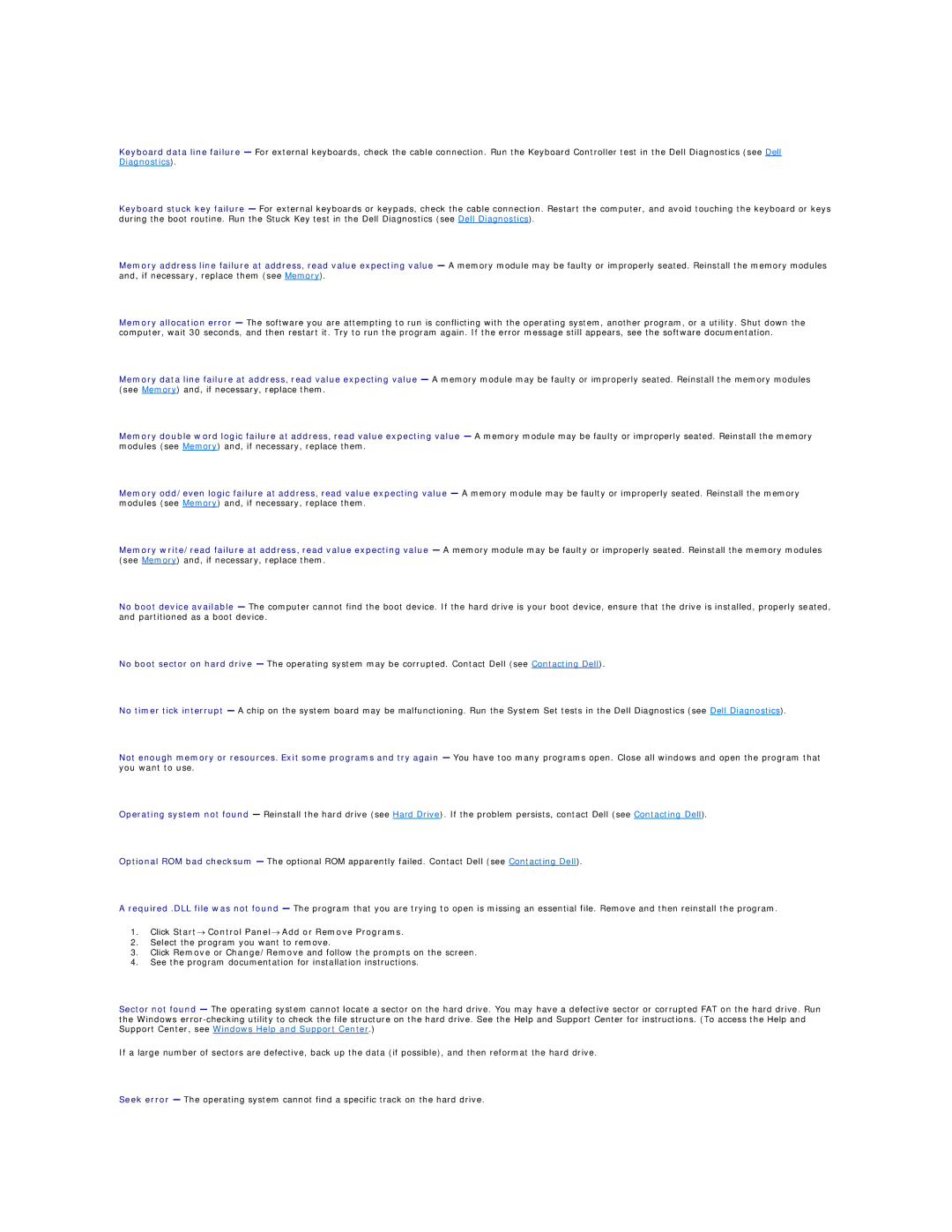Keyboard data line failure — For external keyboards, check the cable connection. Run the Keyboard Controller test in the Dell Diagnostics (see Dell Diagnostics).
Keyboard stuck key failure — For external keyboards or keypads, check the cable connection. Restart the computer, and avoid touching the keyboard or keys during the boot routine. Run the Stuck Key test in the Dell Diagnostics (see Dell Diagnostics).
Memory address line failure at address, read value expecting value — A memory module may be faulty or improperly seated. Reinstall the memory modules and, if necessary, replace them (see Memory).
Memory allocation error — The software you are attempting to run is conflicting with the operating system, another program, or a utility. Shut down the computer, wait 30 seconds, and then restart it. Try to run the program again. If the error message still appears, see the software documentation.
Memory data line failure at address, read value expecting value — A memory module may be faulty or improperly seated. Reinstall the memory modules (see Memory) and, if necessary, replace them.
Memory double word logic failure at address, read value expecting value — A memory module may be faulty or improperly seated. Reinstall the memory modules (see Memory) and, if necessary, replace them.
Memory odd/even logic failure at address, read value expecting value — A memory module may be faulty or improperly seated. Reinstall the memory modules (see Memory) and, if necessary, replace them.
Memory write/read failure at address, read value expecting value — A memory module may be faulty or improperly seated. Reinstall the memory modules (see Memory) and, if necessary, replace them.
No boot device available — The computer cannot find the boot device. If the hard drive is your boot device, ensure that the drive is installed, properly seated, and partitioned as a boot device.
No boot sector on hard drive — The operating system may be corrupted. Contact Dell (see Contacting Dell).
No timer tick interrupt — A chip on the system board may be malfunctioning. Run the System Set tests in the Dell Diagnostics (see Dell Diagnostics).
Not enough memory or resources. Exit some programs and try again — You have too many programs open. Close all windows and open the program that you want to use.
Operating system not found — Reinstall the hard drive (see Hard Drive). If the problem persists, contact Dell (see Contacting Dell).
Optional ROM bad checksum — The optional ROM apparently failed. Contact Dell (see Contacting Dell).
A required .DLL file was not found — The program that you are trying to open is missing an essential file. Remove and then reinstall the program.
1.Click Start→ Control Panel→ Add or Remove Programs.
2.Select the program you want to remove.
3.Click Remove or Change/Remove and follow the prompts on the screen.
4.See the program documentation for installation instructions.
Sector not found — The operating system cannot locate a sector on the hard drive. You may have a defective sector or corrupted FAT on the hard drive. Run the Windows
If a large number of sectors are defective, back up the data (if possible), and then reformat the hard drive.
Seek error — The operating system cannot find a specific track on the hard drive.
